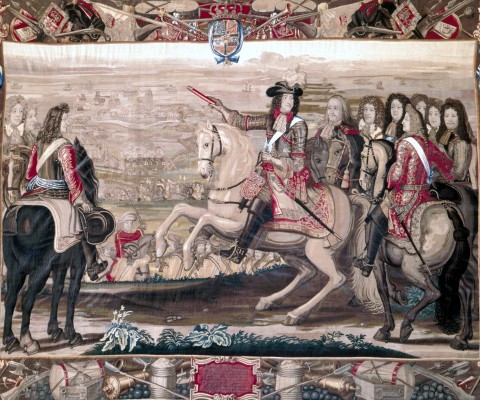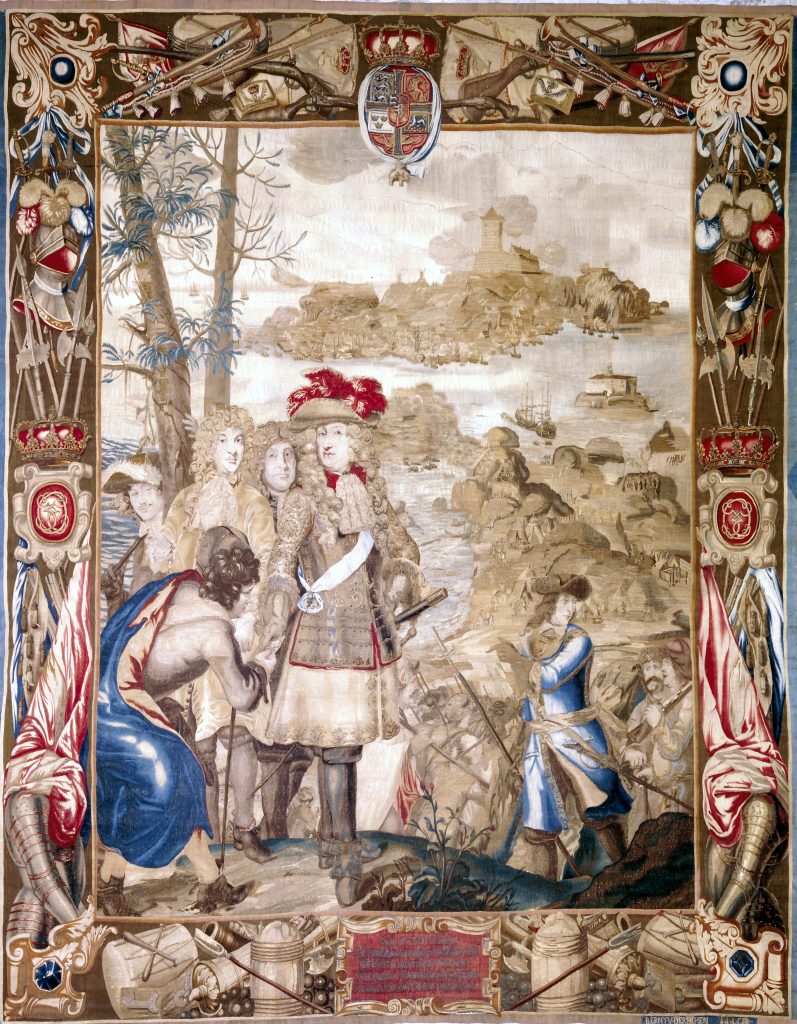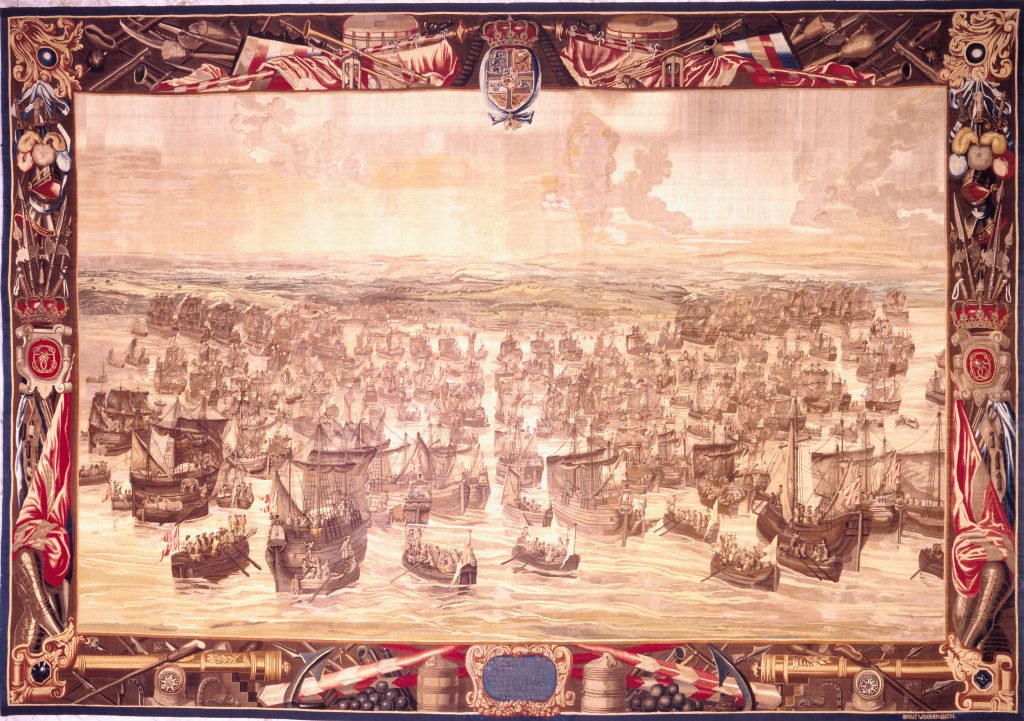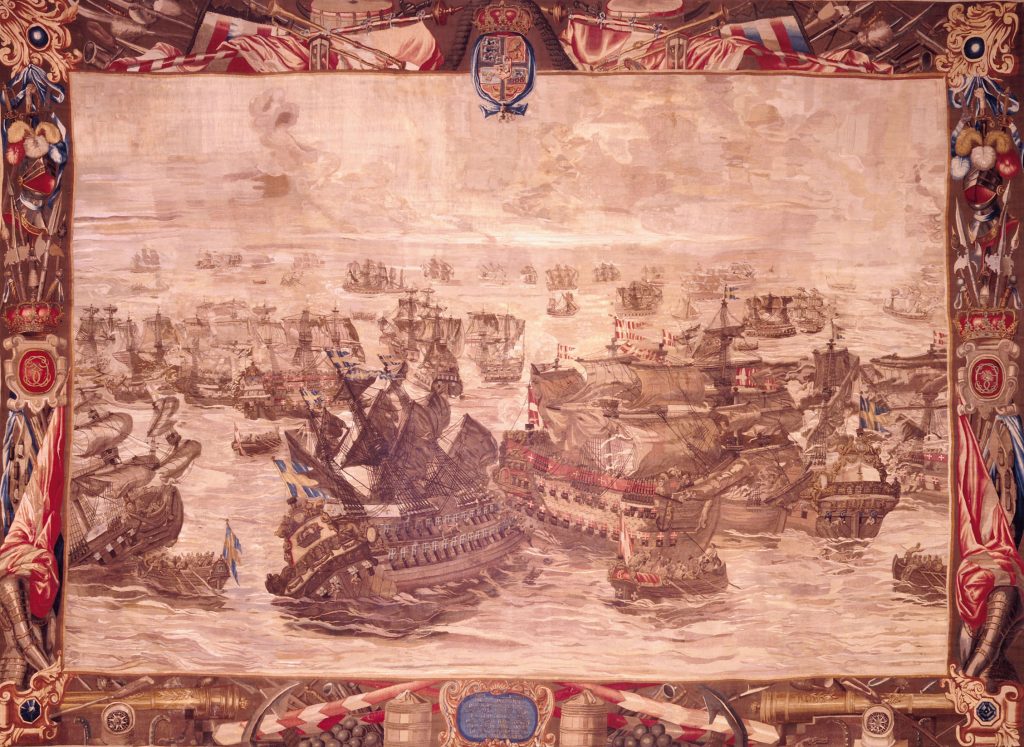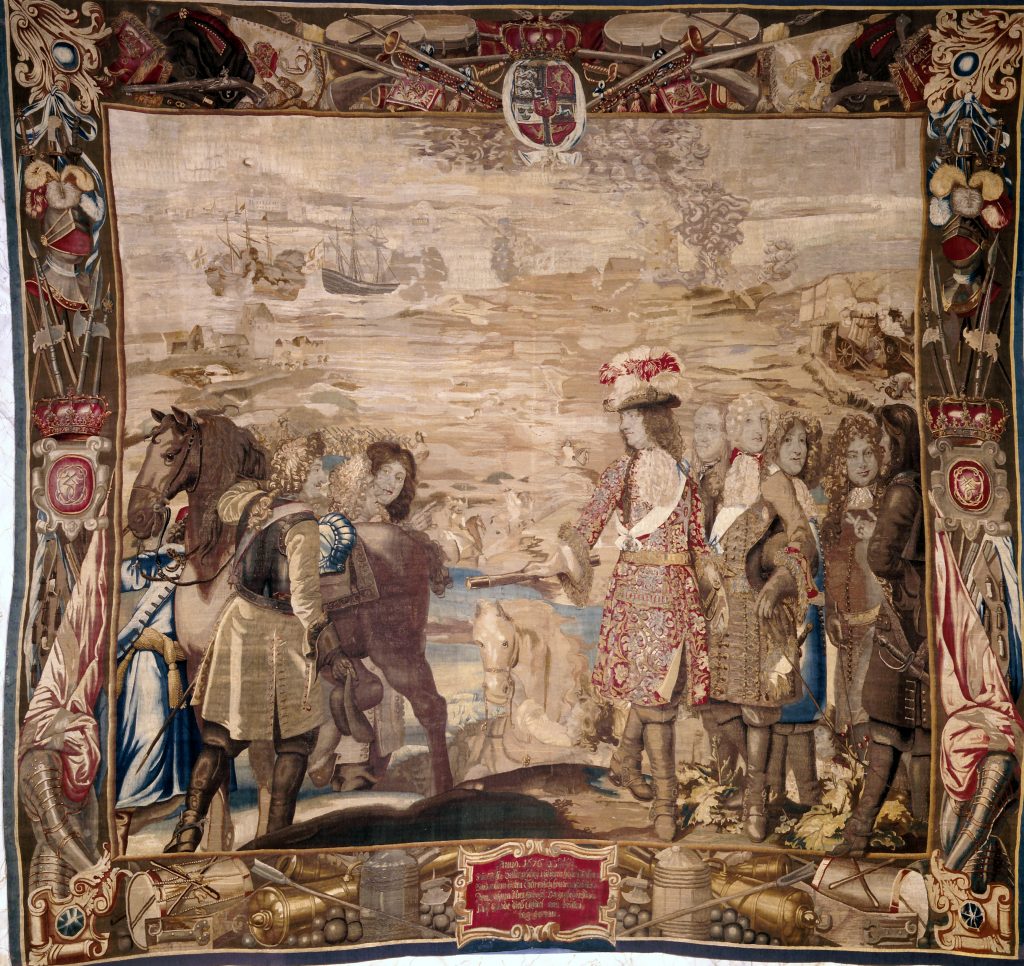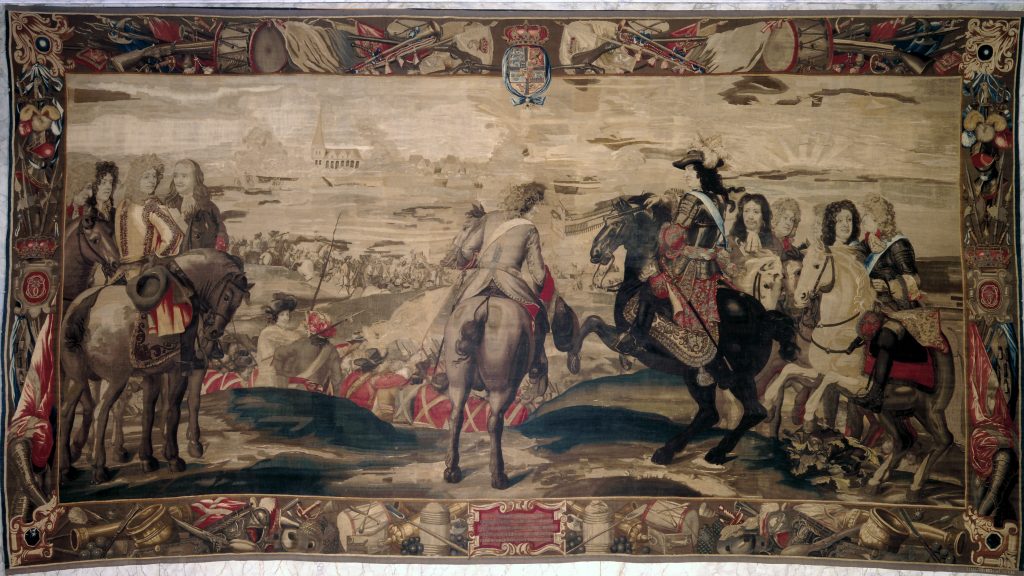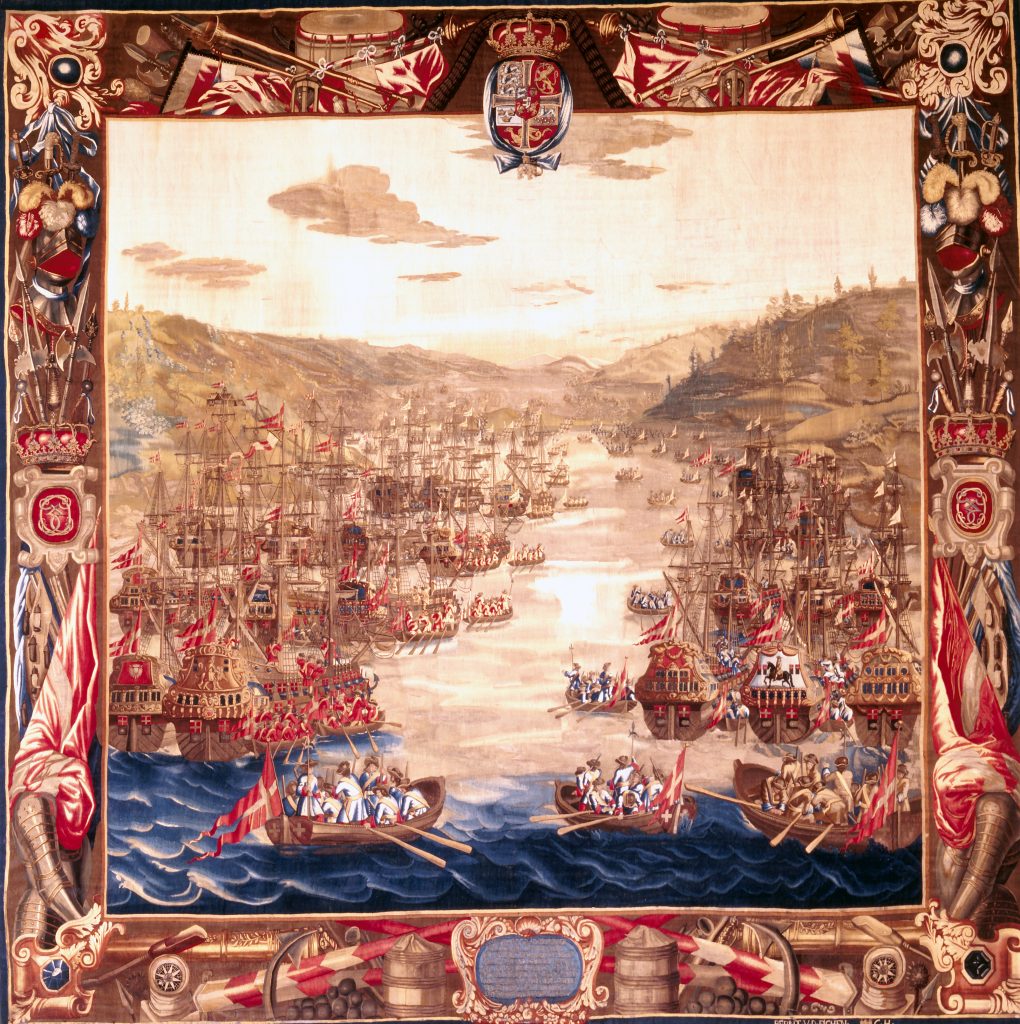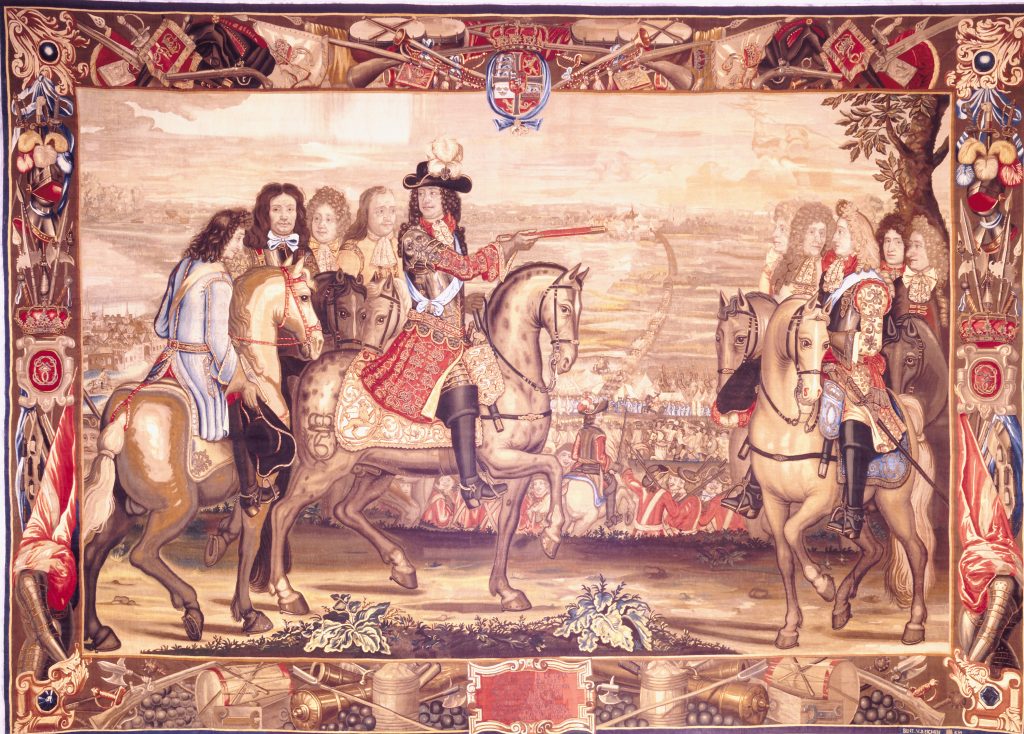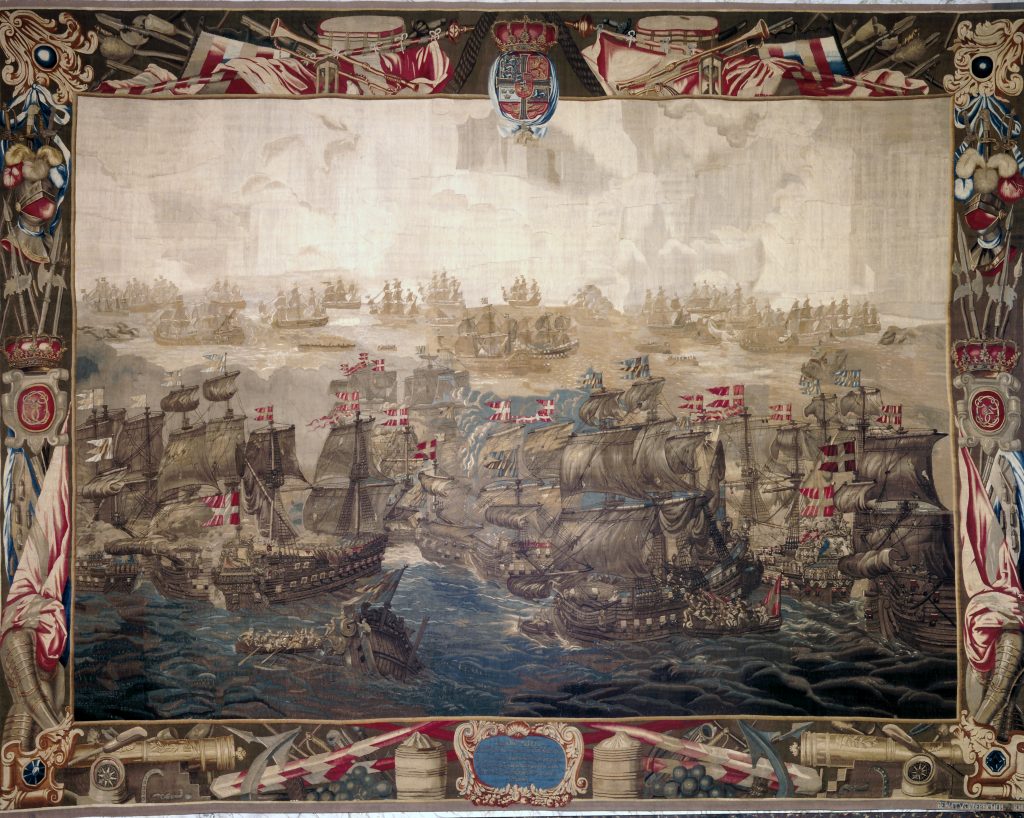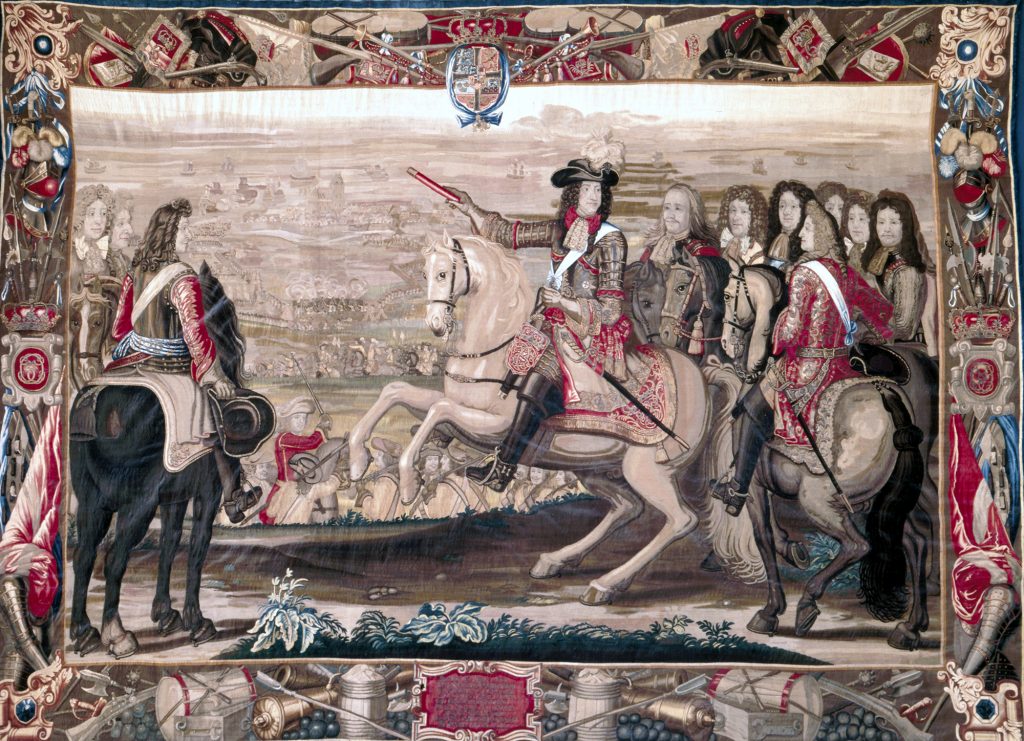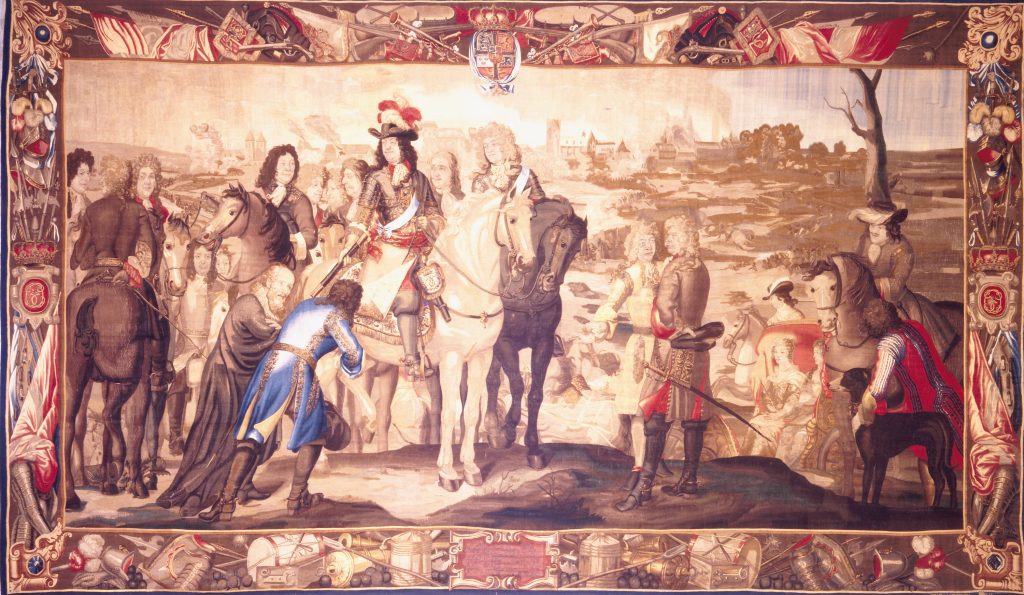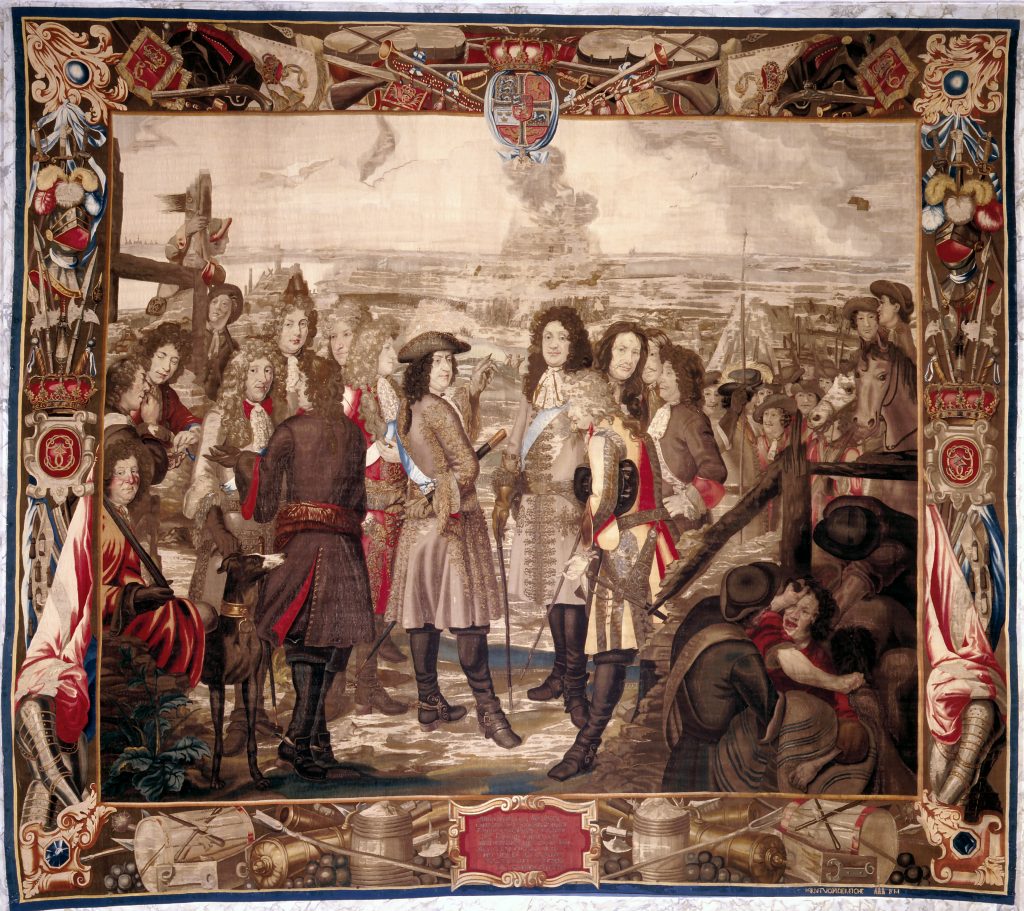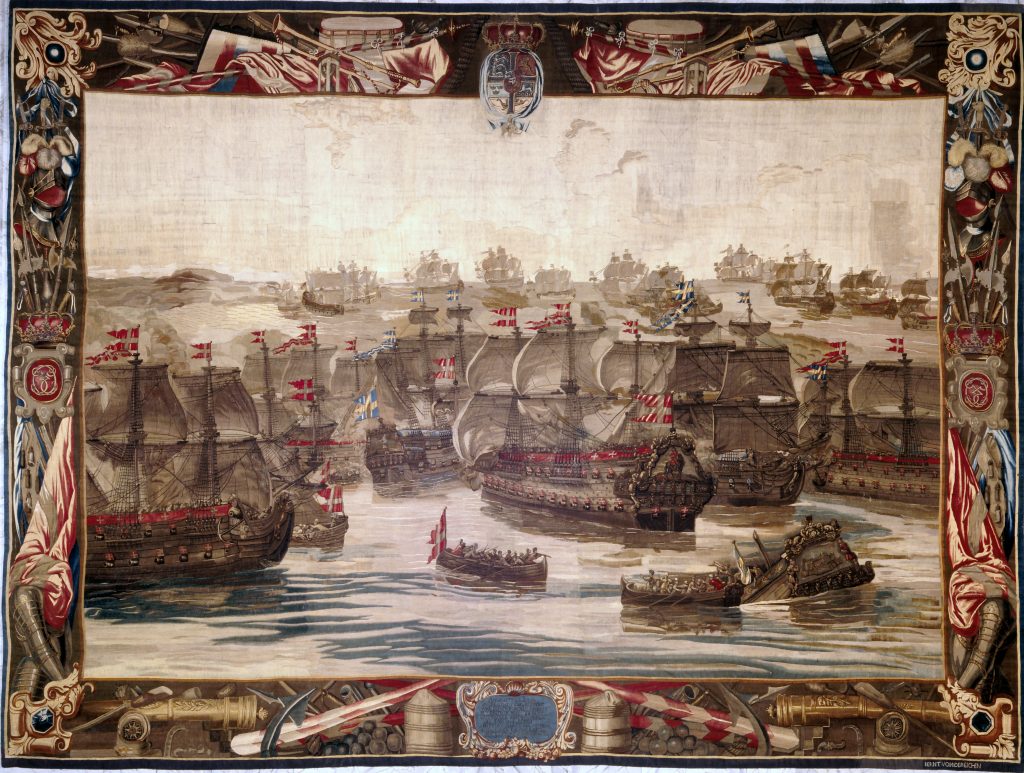The Rosenborg Tapestries
Christian V’s series of tapestries showing his victories in the Scanian War, woven in 1685-93, for the Great Hall at Rosenborg Castle.
In September 1675, Christian V had his desire for a war with Sweden fulfilled. The aim was to reconquer the areas east of the Øresund Sound, which had been lost at the Treaty of Roskilde in 1658.
During the Dano-Swedish War of 1657–58, the Swedish army had caught the Danes completely off guard by rapidly moving northwards from the Swedish areas along the eastern coast of the Holy Roman Empire, and suddenly standing at the gates of Copenhagen.
Christian V wanted to prevent a repeat this catastrophic result at all costs, and therefore concentrated his efforts in the first phase of the war on securing power in the southern Baltic and conquering Swedish Western Pomerania.

 Dansk
Dansk
 English
English
 Deutsch
Deutsch

